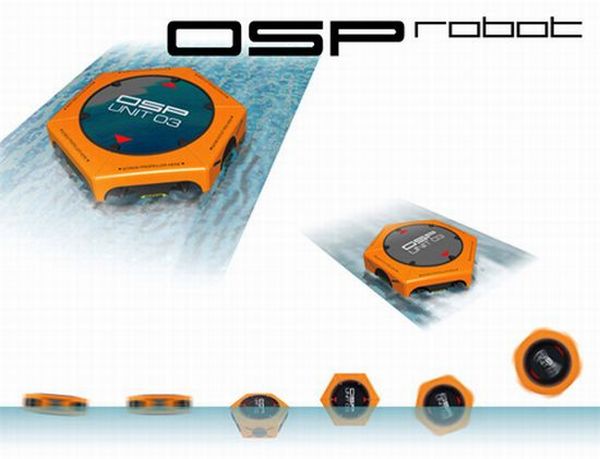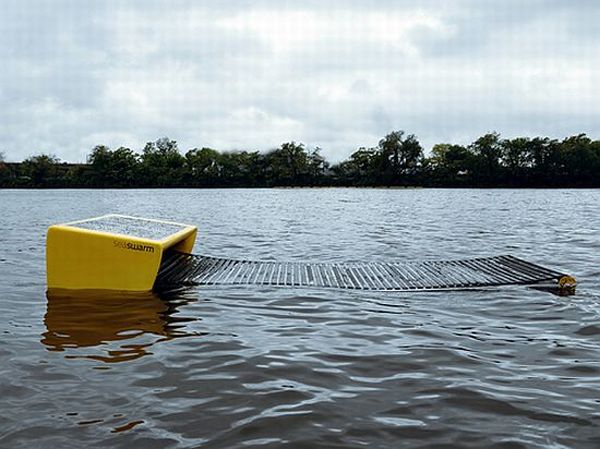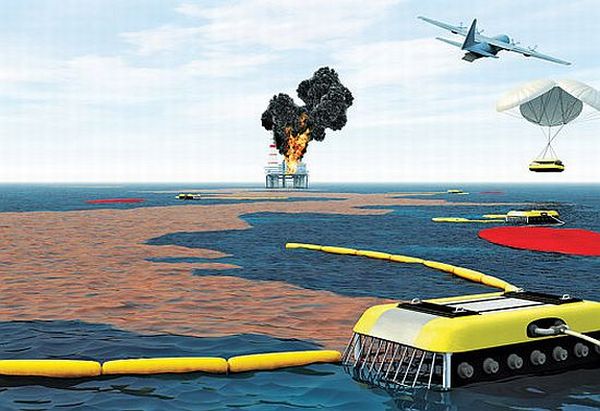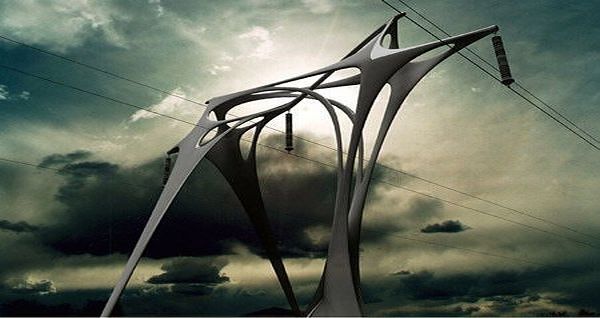
Whatâs happening right now?
Major oil spill accident in the Gulf of Mexico, also known as Deepwater Horizon disaster or the BP oil spill, recently has prompted many researchers to develop a faster technology to deal with the menace. As per estimates, about 4.9 million barrels (780,000 m3) of crude oil was lost and about $20 billion was spent to contain the disaster. Still, it caused serious damage to the marine and wild life habitats and the fishing and tourism industry of the Gulf. To avoid such accidents in future, researchers have now proposed to use robotics technology for a faster and cheaper relief, as you would see below.:
Trends:
1. OSPA Robot to clean oil spills

The OSPA robots could be one of the quickest mean of thwarting the ill-effects of an oil spill. Designed by Ji-hoon Kim, the OSP bots help contain the oil spill by forming an inflatable barrier around it on an accident site. Clean-up crews can then remove the oil from water. The bots have been made with the help of advance robotics and work with multi-robot control algorithms. It can be quickly transported to the accident site and deployed from a helicopter or a boat to accomplish the mission.
2. MIT researchers propose solar-powered robotic S.W.A.T team to clean oil spills

Researchers at the Massachusetts Institute of Technology’s Senseable City lab are developing a robotic technology that could clean-up the oil spill quickly and at a fraction of the cost taken by conventional methods. Named as SeaSwarm technology, it uses robots and solar-powered conveyor belts made up of nanowire mesh that eats up the oil from the water. They can either burn the collected oil during the operation or deposit it in a reservoir.
The robots work on the principle of Swarm robotics which enables thousand of devices to work and coordinate simultaneously with the help of GPS and wireless technology. According to researchers, the entire operation would cost around $ 200 million which is far less than what was spent by BP during the Deepwater Horizon disaster.
3. Oil-eating AEROS robots could clean oil spills

The Global Response Group (GRG) is developing a system of automated robots that can clean oil spill in a few days. Named as Airborne Robotic Oil Spill Recovery System (AEROS), the robots can be deployed at the accident site with help of an airplane. They would first stop the oil from spreading and then collect it for refining with the help of centrifuge-like separators. The robots absorb oily water and spin the liquid to create a stream of oil in the center. According to GRG, each robot can clean up to 3,000 gallons of oil per minute. Also, the water coming out of the robots is 99 percent pure.
The concept:
Oil spill accidents not only cause the loss of costly fuel but seriously harms the sea and wild life habitats and has serious consequences for humans as well. The present technology is not efficient for tackling the disaster as was evident during the BP oil spill. Apart from compromising the health of workers by exposing them to cancerous toxic chemicals, the present oil spill skimming technology was able to collect only 3 percent of the total oil spill. However, modern robotic technology can prove to be more efficient and faster.
The advantages:
Use of robots for containing oil spills has many advantages. Some of them can be outlined as follows.
1. Robots can work quickly and with more efficiency. They can go deeper and collect more oil.
2. It would save the workers from getting exposed to dangerous and toxic chemicals.
3. The robotic technology would first contain the oil spill and confine it to a limited area. This will stop the further spread of crude oil.
4. The robots would be able to operate irrespective of weather conditions.
5. It would involve less cost and and time for cleaning the water.
The impact:
While there may not be a fool proof plan to stop all future accidents, we can always prepare ourselves in the best possible way to mitigate or prevent any disaster. The plans for using robotic technology for stopping oil spill is thus a welcome development. However, it is still too early to comment on its efficiency as researchers are still developing the technology. One hopes that robots would come to the rescue if anything like BP oil spill happens again.




